Porte de Sungnyemun (Namdaemun) (숭례문)
2.9Km 2022-08-03
40, Sejong-daero, Jung-gu, Seoul-si
+82-2-779-8547
La Porte Sungnyemun est le Trésor National N° 1, souvent appelée Namdaemun. Etant la plus grande porte en Corée, la Porte Namdaemun a une entrée de la forme d’une arche, au centre d’une plateforme en pierres. Le pillier et le toit sur la plateforme se divise entre une couche supérieure et une couche inférieure. Il y a une porte pour pouvoir passer à chacune des portes à l’est et à l’ouest. Les herbes vertes entourant la plateforme sont la preuve qu’il s’agissait bien du mur d’un château. Lorsque le premier roi de la Dynastie Joseon, Lee Seong-Gye (règne 1335-1408), a construit la ville capitale, il croyait que le feu atteindrait le Palais Gyeongbokgung, de même que la ville capitale, parce que le Mt. Gwanaksan de Séoul à la forme d’un feu, d’après les principes de Feng-Shui. C’est pourquoi, la tablette sur la Porte Sungnyemun a été inscrite verticalement afin de protéger la ville d’un incendie parce que les caractères chinois qu’on écrit dans le sens horizontal, ressemblent à un feu. L’idéographe de la tablette de la Porte Sungnyemun est solennel, élégant, puissant et décent. L’ idéographe est fameux pour le caractère du Prince Yangnyeongdaegun (règne 1394~1462), le premier fils du Roi Taejong (1367-1422) de la Dynastie Joseon. Comme il est situé au centre d’une grande route, c’est difficile de voir de près la Porte Sungnyemun mais on peut la voir facilement quand on prend un autobus ou marche dans la rue. La nuit, la lampe de mercure sous la Porte Namdaemun s’ajoute à sa beauté naturelle.
Salon de la distribution alimentaire de Séoul 2025 (K-Food Show) (2025 서울식품유통대전(K푸드쇼))
2.9Km 2025-07-01
12, Eulji-ro (souterrain), Jung-gu, Séoul
02-6965-0055
Le journal Financial News organisera en mai prochain, sur la pelouse de l’hôtel de ville de Séoul, la 2ᵉ édition du « Salon de la distribution alimentaire de Séoul 2025 (K-Food Show) » pendant deux jours. Né de la fusion du Forum international de l’alimentation de Séoul et du Forum de l’innovation dans la distribution, cet événement a suscité un vif intérêt dès sa première édition l’année dernière, prouvant son potentiel. Cette année, l’accent sera mis sur les snacks coréens (K-snacks), de plus en plus populaires sur le marché international, avec des programmes immersifs conçus pour permettre aux visiteurs étrangers de participer pleinement à l’expérience. Le salon proposera une riche diversité de contenus allant des expositions sur les K-snacks et la K-beauty jusqu’aux forums animés par des professionnels du secteur. Un rendez-vous à ne pas manquer pour découvrir toute la saveur et l’univers du K-snack, au-delà du simple plaisir gustatif.
Hongdae (홍대)
2.9Km 2024-05-16
20, Hongik-ro, Mapo-gu, Seoul
+82-2-323-2240
Hongdae, le quartier qui se situe devant l’université de Hongik, est jalonné de cafés au style unique, de petites galeries, de boutiques de mode et de bijoux fantaisie, de cafés musicaux, de clubs, de marchés d’art et de bons restaurants, ce qui en fait un lieu de prédilection pour les rencontres et les sorties entre amis, ainsi qu’un endroit fascinant à explorer. Si vous voulez vous plonger pleinement dans l’atmosphère du quartier, ne manquez pas d’aller faire un tour dans les rues spéciales telles que la rue des ateliers où s’alignent les instituts privés qui préparent les étudiants en art aux concours d’entrée des universités, mais aussi la rue Picasso et la rue des clubs.
[Principales attractions de Hongdae]
* Rue piétonne de Hongdae : Il s'agit de la rue piétonne principale du quartier de Hongdae où se déroulent des spectacles de rue, remplie du dynamisme de la jeunesse.
* Rue des peintures murales de Hongdae : Il s'agit d'une rue qui se prolonge depuis le restaurant Kanemaya, situé près de la porte arrière de l'université de Hongik, jusqu'à la Four Seasons House (rue Wausan-ro 22). Cette rue est aussi appelée la "rue Picasso" car on peut y trouver des peintures artistiques.
* Les marchés aux puces qui ont lieu le week-end au parc pour les enfants devant la porte principale de l'université de Hongik entre le mois de mars et de novembre, sont une autre attraction importante du quartier. Des artistes s’y réunissent chaque semaine pour y exposer et vendre des produits artisanaux et des accessoires faits main.
Museé d'art Hwangi (환기미술관)
2.9Km 2021-03-27
63, Jahamun-ro 40-gil, Jongno-gu, Seoul-si
+82-2-391-7701
Le Musée d’art Hwangi (환기미술관) a été ouvert dans le but de rendre un hommage au peintre Kim Hwan-Gi (1913-1974), un des artistes coréens les plus réptés dans le style du modernisme.
Il commença par la peinture abstraite en 1930 et en 1950 en se servant de la nature comme inspiration afin de peindre les émotions de la Corée.
Au premier étage du musée vous trouverez une boutique d’art avec des écharpes, des cravates et autres produits dessinés par Kim Hwan-Gi qui sont mis en vente.
Galerie Hyundai (갤러리 현대)
3.0Km 2021-03-09
14, Samcheong-ro, Jongno-gu, Seoul-si
+82-2-2287-3500
La galerie Hyundai a été inauguré sous le nom de Hyundai Hwarang (galerie) à Insadong (Jongno-gu, Séoul) en avril 1940. Pendant plus de quarante années, cette galerie a exposé des pièces d’artistes coréens tels que Park Soo Keun, Joong Seop Lee, Whanki Kim, Ucchin Chang, Kyung Ja Chun, Dai Won Lee, Young Kuk Yoo, Ufan Lee, Nam June Paik, ou encore Shim Moon-seup.
Elle possède et gère désormais de nombreuses salles d’exposition comme « Le Nouvel Espace », « L’Espace Principal » (chacune avec deux étages), et « L’Espace Gangnam ». La Galerie Dugahun (affiliée à la Galerie Hyundai) n’est qu’à quelques pas du Nouvel Espace et est gérée conjointement avec Dugahun, un restaurant à vins situé dans une hanok (maison traditionnelle coréenne).
L’Espace Gangnam peut se vanter d’avoir un mélange éclectique de pièces et de styles d’artistes à la fois internationaux et coréens. La Galerie Hyndai gère aussi une « Galerie Fenêtre», salle d’exposition pour les artistes prometteurs.
Centre des lunettes de Namdaemun (남대문 안경상가)
3.0Km 2025-08-21
Namchang-dong, Jung-gu, Séoul
Centre commercial de Namdaemun 02-753-2805
Le marché de Namdaemun regroupe plus de 150 magasins de gros et de détail spécialisés dans les lunettes, ce qui représente plus de 50 % de la distribution nationale dans ce secteur. Les boutiques se concentrent principalement à Namchang-dong, derrière le centre d’importation de Sungnyemun, ainsi que dans le bâtiment principal du marché, le centre commercial de Namdaemun, au 2ᵉ étage du théâtre de Namdaemun, le long de la rue piétonne de Namdaemun-ro et à l’entrée du marché sur Toegye-ro, notamment dans le complexe “Segyero Optical Town”. Certaines enseignes sont également dispersées dans d’autres zones. Parmi ces magasins, certains de grande taille produisent et vendent leur propre marque, tandis que d’autres travaillent en lien direct avec des usines sous-traitantes. Dans les deux cas, les consommateurs peuvent acheter des lunettes 30 à 50 % moins cher que les prix pratiqués sur le marché classique.
Musée de Hanbok (이리자 한복전시관)
3.0Km 2021-10-06
20, Samcheong-ro, Jongno-gu, Seoul-si
+82-2-734-9477
Le musée de Hanbok se situe de l’autre coté de l’entrée principale du palais royal de Gyeongbok où se trouve la billetterie. Ainsi, il est judicieux, après avoir visité le palais, d’aller faire un tour à ce musée afin de voir les habits traditionnels coréens; si les horaires d’ouverture coïncident. Car le musée n’ouvre ses portes que le 1er et le 3ième samedi de chaque mois, alors vérifiez bien les jours afin de ne pas marcher pour rien.
Le musée de Hanbok n’est pas seulement un musée sur les habits traditionnels coréens. Il met aussi en valeur tous les évènements et rituels de la naissance à la mort avec bien sûr, les vêtements correspondants. Vous pouvez donc être le témoin des traditions coréennes et voir à quelles occasions les habits doivent être portés. Tous les hanboks sont crées par la styliste Lee Ri-Ja elle-même, fabriqués avec la plus grande attention et la plus importante minutie. Il y a environ 300 pièces exposées et certaines sont si pratiques qu’elles peuvent même être portées au quotidien. A coté des hanboks se trouvent aussi des ornements et autres petits objets décoratifs. Vous en serez charmé. Une fois avoir visité le palais royal de Gyeongbok et ce musée, allez vous promener vers Gwanghwa-mun ou Insa-dong. A Gwanghwa-mun vous pourrez voir certains aspects culturels modernes tandis qu’à Insa-dong vous serez plutôt dans une ambiance artistique et traditionnelle coréenne.
Musée d’art africain (아프리카미술관)
3.0Km 2022-09-30
24-1, Samcheong-ro, Jongno-gu, Seoul-si
+82-2-730-2430
Le musée d’art africain a été créé dans le but d’accueillir de nombreux festivals artistiques et fournir un espace de recherche sur des thèmes variés. Un principe majeur de la galerie est de promouvoir les oeuvres d’art qui essayent activement d’explorer l’esprit humain.
The Hyusik Aneuk Hôtel – Hongdae (더휴식 아늑호텔 홍대점)
3.0Km 2025-05-19
162-7, Donggyo-ro, Mapo-gu, Seoul
The Hyusik Aneuk Hôtel – Hongdae est un lieu où le simple fait d’y séjourner rend l'expérience encore plus agréable. Grâce à ses chambres thématiques variées, chaque moment de repos devient une expérience unique, adaptée à vos envies. Plongez-vous dans un film dans une chambre Movie privée, oubliez le tumulte du quotidien dans une chambre Méditation propice à l’introspection, profitez d’un environnement idéal pour le télétravail dans une chambre Business, ou détendez-vous pleinement dans une chambre Gaming pour libérer tout le stress accumulé.
Musée National d'Art Contemporain (국립현대미술관 서울관)
3.0Km 2023-06-23
30, Samcheong-ro, Jongno-gu, Seoul
+82-2-3701-9500
Le Musée National d'Art Contemporain de Séoul a ouvert ses portes en 2013 au centre de Séoul à côté du palais Gyeongbok. Le musée a adapté un concept de 'cour' pour mieux se mélanger aux alentours et lier organiquement l'extérieur et l'intérieur du bâtiment.
Sur le terrain du musée, il y avait autrefois quelques grandes organisations administratives de l'époque Joseon mais aussi les hôpitaux militaires lors de la colonisation japonaise. Ce site est un site historique tant sur le plan politique que culturel. Notez que le musée est fermé les mercredis et samedis.
*Jour de l'inauguration : 12 novembre 2013
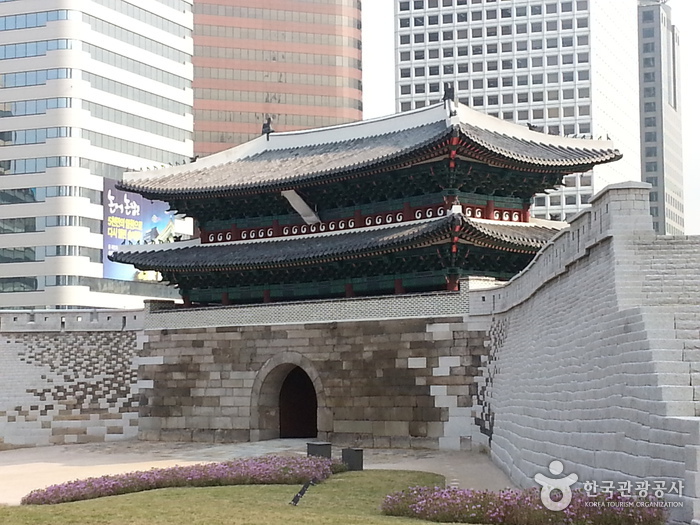



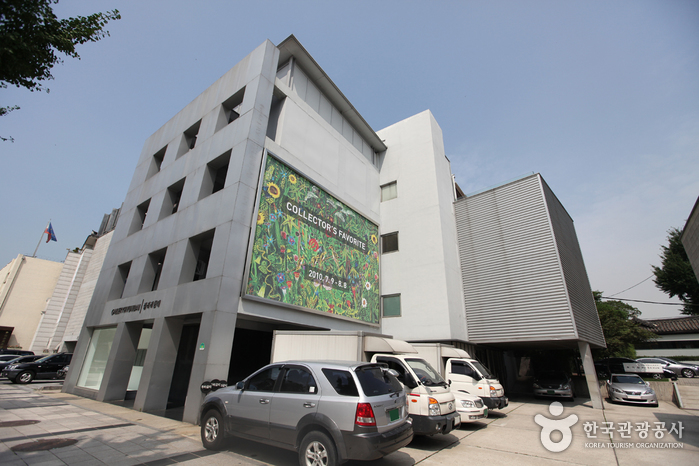
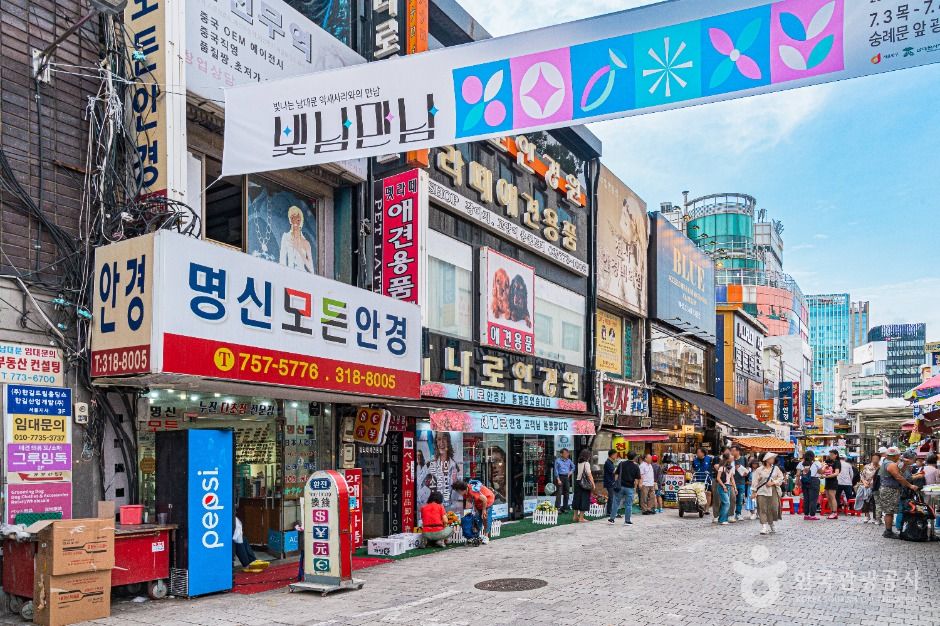
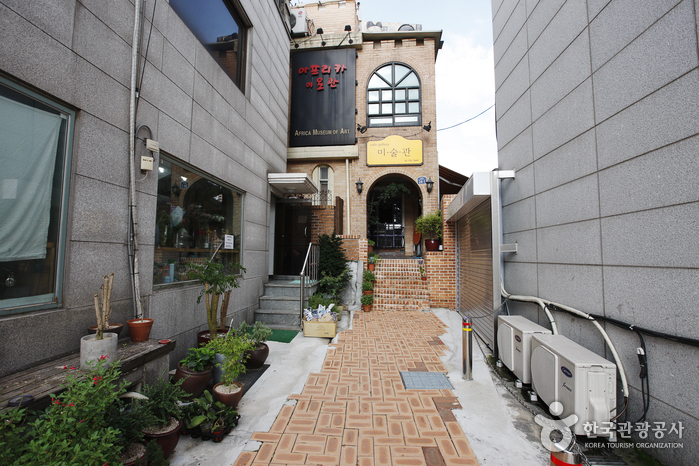
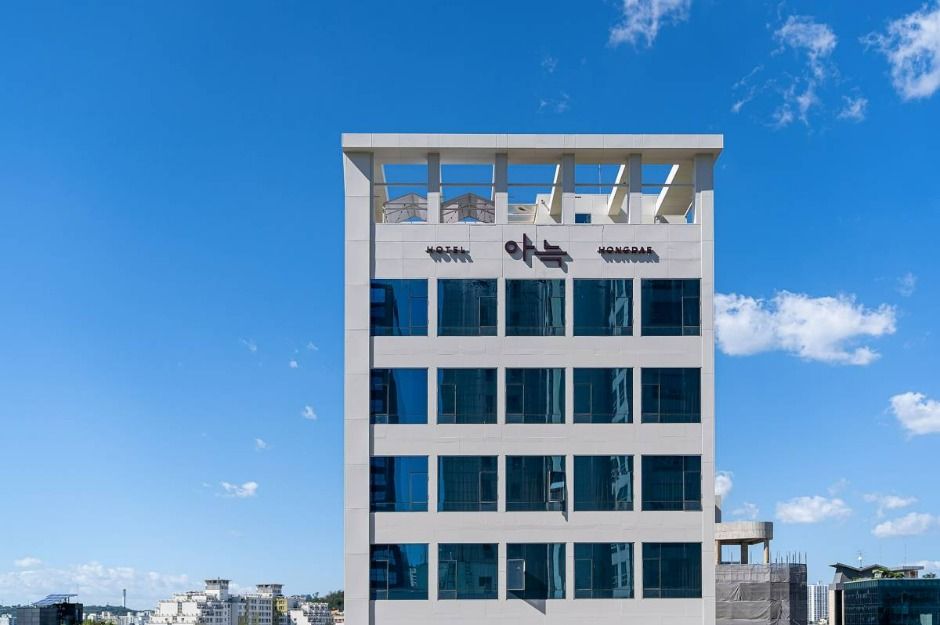
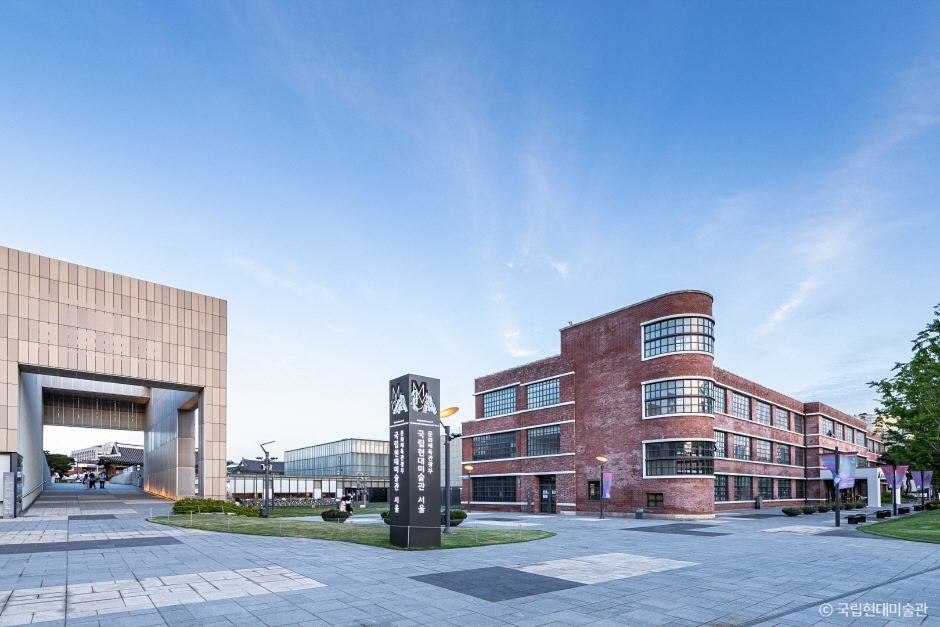
 Français
Français
 한국어
한국어 English
English 日本語
日本語 中文(简体)
中文(简体) Deutsch
Deutsch Español
Español Русский
Русский